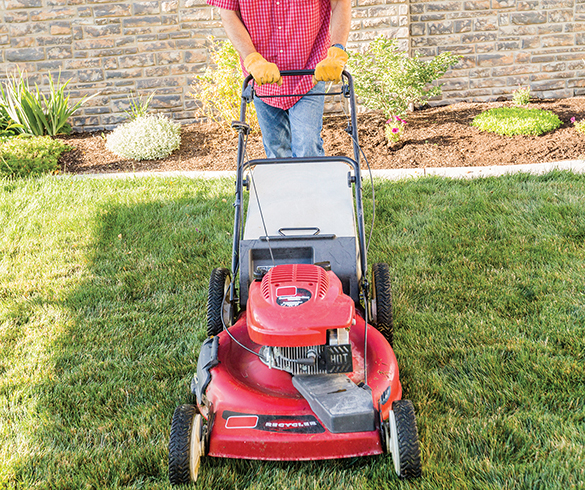
5 Fall Tips for a Healthy Yard
(eLivingtoday.com) While many homeowners think lawns need less care during the fall months, it’s actually the perfect time to give your yard the extra boost in needs to make it through a dormant winter.
Giving your lawn a little autumn attention as it works to absorb energy, moisture and nutrients to sustain it through the colder months can pay dividends with a lush, healthy yard next spring. Consider these tips to take advantage of the fall growing period:
Mow
Grass continues to grow until the first frost, so it’s important to keep mowing throughout the fall. Ideally, you should keep your yard at 2 1/2-3 inches in height, which is short enough to prevent matting and fungi like snow mold yet long enough to keep the root system deep enough to withstand the cold and dryness of winter. Leaving small clippings on the yard can also add organic matter, moisture and nutrients to the soil.
Aerate
Because your yard typically suffers some degree of soil compaction and heat stress, which can lead to brown or thinned grass, regular aeration can prevent soil from compacting and defend against thatch – a layer of roots, stems and debris – that blocks water, oxygen and fertilizer from reaching the roots. The process of aerating removes soil plugs from the yard to encourage root growth and free up passageways for nutrients.
Rake
When leaves fall on your lawn, they can block out sunlight and, if left too long, stick together to form a suffocating mat on your grass, potentially leading to fungal diseases. Start raking as soon as leaves begin to fall or blow into your yard, and rake at least weekly. Alternatively, use your lawnmower fitted with a collection bag attachment to remove leaves from your lawn’s surface.
Fertilize
Because grass grows slower as the weather cools, fall is the ideal time to fertilize. In mid-to-late-fall, apply a dry fertilizer to your grassy areas to provide necessary nutrients and encourage deep roots and denser growth that can better compete with weeds and tolerate disease and insects. For optimum coverage, use a drop spreader, though crank-style broadcast spreaders also work.
Over-seed
A dense lawn not only looks good, but also helps protect against weeds. Over-seeding your existing turf can help fill in any thin or bare spots and also introduces the resilient grass seed. For best results, over-seed immediately after aerating when the ground is still warm, nights are cooler and the sun is not as hot during the day.
For more strategies to build a healthy, better looking lawn, visit eLivingtoday.com .









